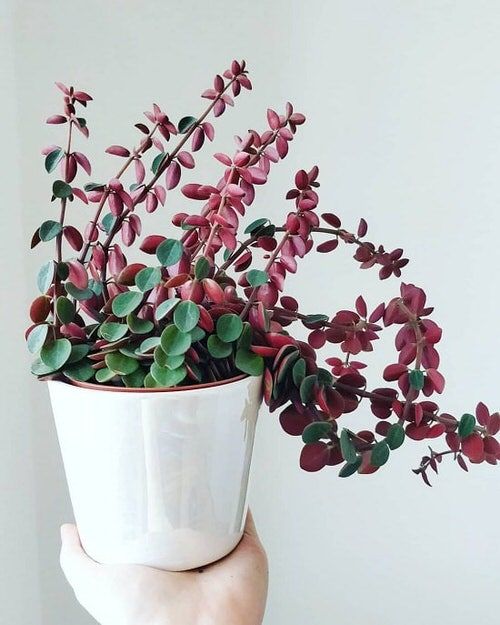A World of Green Above, Red Below: Unveiling Plants with Red Leaf Undersides
The plant kingdom boasts a mesmerizing array of colors and textures. While verdant green foliage reigns supreme, a surprising splash of red on the undersides of leaves adds a captivating dimension to many plant varieties. This guide delves into the vibrant world of plants with green leaves and red undersides, exploring the reasons behind this unique characteristic, showcasing popular examples, and offering helpful tips for cultivating these botanical beauties.
Unveiling the Red: Anthocyanins and the Science of Color
The captivating red hue on the undersides of leaves stems from pigments called anthocyanins. These water-soluble pigments are responsible for a wide range of colors in plants, including reds, purples, blues, and even oranges. Anthocyanin production can be influenced by various factors, including:
- Sunlight: Increased exposure to sunlight can stimulate anthocyanin production, potentially acting as a sunscreen to protect chlorophyll, the green pigment essential for photosynthesis, from UV rays.
- Temperature: Anthocyanin production might also be triggered by cold temperatures, potentially aiding in heat absorption and temperature regulation.
- Stress: Environmental stressors like drought, nutrient deficiency, or physical damage can also lead to increased anthocyanin production.
Why Red Undersides? Potential Benefits for Plants
The presence of red undersides on leaves might offer several advantages for plants:
-
Light Regulation: The red pigments could act as a natural sunscreen, particularly for plants exposed to intense sunlight. By reflecting excess light, especially ultraviolet (UV) rays, the red undersides help protect the delicate chlorophyll within the leaf from sun damage.
-
Temperature Regulation: In colder climates, the red pigments might act as a form of insulation. By absorbing sunlight, the undersides of leaves could trap heat, potentially aiding in temperature regulation for the plant.
-
Reduced Herbivory: Certain studies suggest that the red pigmentation might deter herbivores from feeding on leaves. The vibrant color could signal toxicity or a bitter taste, discouraging hungry insects or grazing animals.
-
Preventing Water Loss: In some cases, the red coloration might help reduce water loss through transpiration, the process by which plants release water vapor into the atmosphere.
A Gallery of Red: Popular Plants with Red Leaf Undersides
The botanical world offers a diverse selection of plants with green leaves and red undersides. Here are some popular examples:
-
Begonia Rex (Rex Begonia): Renowned for their stunning foliage, many Begonia Rex cultivars showcase vibrant green leaves adorned with intricate patterns and a captivating red underside.
-
Peperomia varieties: Several Peperomia varieties, like Peperomia verticillata (Red Log Plant) and Peperomia caperata ‘Rosso’ (Peperomia Rosso), feature succulent green leaves with eye-catching red undersides.
-
Acalypha wilkesiana (Copperleaf): This vibrant plant boasts glossy green leaves with metallic coppery tones and a striking red underside.
-
Tradescantia zebrina Burgundy (Wandering Jew): This vining houseplant features striped green leaves with a beautiful burgundy or red coloration on the undersides.
-
Hemigraphis colorata ‘Smokey Rose’ (Painted Nettle): This unique plant displays textured, quilted leaves with a delightful combination of colors. The top surface showcases a metallic sheen, while the undersides boast a captivating red hue.
Cultivating Red Underside Beauties: General Care Tips
While specific requirements may vary slightly between species, here are some general care tips for plants with red undersides:
-
Light: Most plants with red undersides prefer bright, indirect sunlight. Avoid exposing them to harsh, direct sunlight, which can scorch the leaves.
-
Watering: Develop a consistent watering routine, aiming to keep the soil moist but not soggy. Allow the top inch of soil to dry slightly between waterings.
-
Humidity: Many of these plants appreciate moderate to high humidity levels, especially during dry winter months. Grouping them together or using a pebble tray filled with water can help increase humidity around them.
-
Fertilization: During the active growing season (spring and summer), a balanced liquid fertilizer diluted to half strength can be applied every few weeks. Avoid overfertilizing, which can damage the roots.
Frequently Asked Questions (FAQ)
- Do all plants with green leaves have red undersides?
A: No, not all plants with green leaves exhibit red undersides. The presence of anthocyanin pigments and the resulting coloration vary depending on the plant species and its environmental conditions.
- Are red undersides a sign of a plant being unhealthy?
A: Not necessarily. While certain deficiencies or stresses can trigger anthocyanin production, the presence of a red underside is often a normal characteristic for many plant species.





